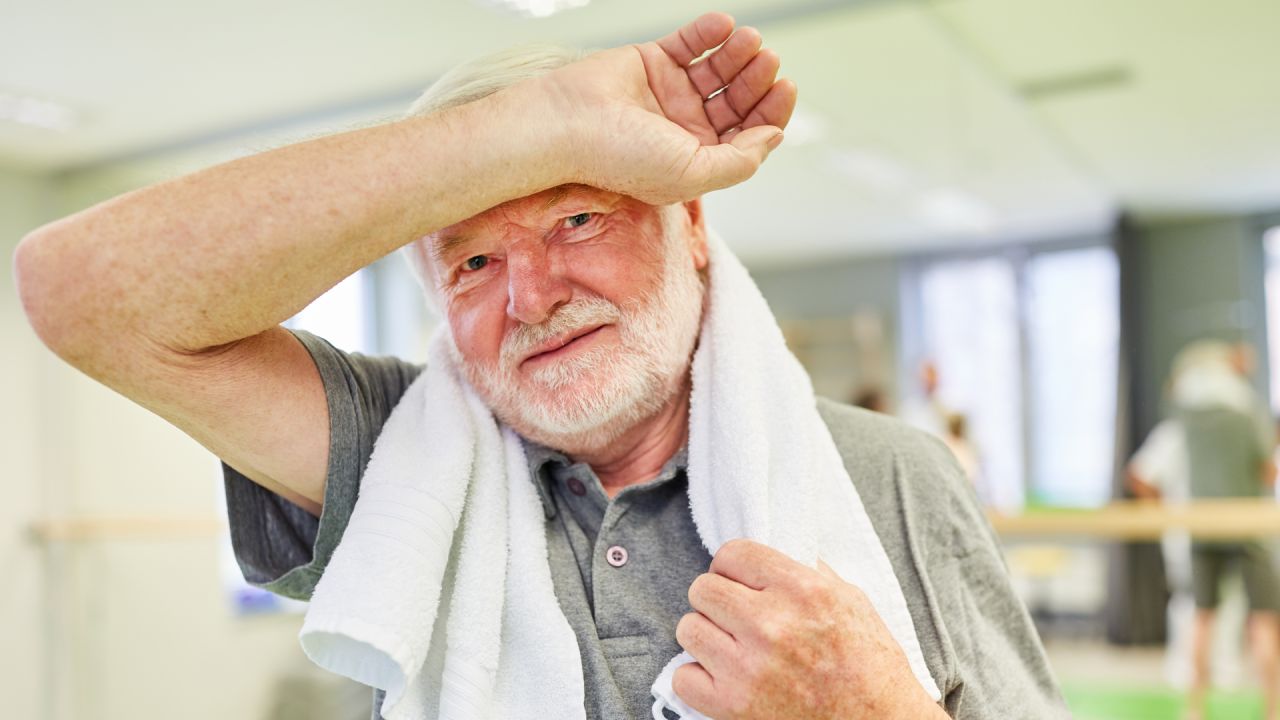Do men really sweat more than women?

Men are generally taller than women, but we do not define gender on the basis of stature. Similarly, our research shows we cannot define men and women according to their propensity to sweat (although some parents and partners might suggest otherwise).
When we studied men and women during exercise in warm, dry conditions, gender differences in heat loss responses (skin blood flow and sweating) could be explained almost entirely by individual variations in body size and shape.
The results refute the common saying “men sweat, while women glow”.
How objects - and bodies - lose heat
Heat loss from any object is dictated by the ratio of its surface area to its mass, described by the term “specific surface area”. Hot objects with a larger specific surface area cool more quickly than those with a smaller specific surface area. Doubling the radius (size) of a sphere increases its surface area four-fold but its mass eight-fold: this is known as “isometric growth”. Isometrically larger objects don’t lose heat as easily.
Shape (morphology) also has a powerful influence on heat loss, so a thin rectangular prism loses heat much faster than a sphere of the same composition and mass. In a previous article, we explained you’re no more likely to lose heat from your head than other parts of your body.
Unlike geometric objects, animals do not grow isometrically; we retain a recognisable shape, but our proportions change (this is known as “allometric growth”). This is most evident in children, who have proportionally larger heads and shorter limbs than adults.
However, if you double your weight through building muscle and putting on fat (without changing height), this does not result in a doubling of your skin surface area. Such a weight change increases your surface area only by about 30%, which translates into reduced specific surface area, and lower heat loss by these physical mechanisms. The larger a person is, the lower is their specific surface area and the less effective these mechanisms become. This is where the physiological mechanisms of heat loss, particularly sweating, come into play in preventing undesirable heat gains.
Sweating and evaporative cooling
Since humans evolved in the heat of Africa, we acquired an ability to transport heat from deep within our bodies to the skin surface for dissipation via skin blood flow. Similarly, we acquired an evaporative cooling mechanism that can function when the air is hotter than the skin: sweating. These physiological responses enable us to manage body heat, and they are activated when physical heat loss becomes insufficient.
To examine the influence of body shape and gender on these two physiological responses to manage body heat, we studied men and women (60 university students) of widely variable but overlapping body sizes. Subjects had very similar exercise habits, endurance fitness and amounts of body fat.
For each participant, we calculated a target exercise intensity related directly to their skin surface area. This resulted in comparable increases in body temperature across all participants, and equivalent heat-loss requirements. To the best of our knowledge, this was the first investigation to achieve those outcomes across a morphologically diverse sample of men and women. Previous researchers seem not to have fully appreciated these important experimental design criteria, leading to experiments that perpetuated the myth that all men sweat more than women.
Our analyses have shown that variations in skin blood flow and sweating between men and women are dependent not on gender, but on body morphology.
In answering our questions, we demonstrated that the lyrics of “Down under” (Men at Work) require modification.
Do you come from a land down under?
Where women glow and men plunder?
While we do come from a land down under, and while some men may unfortunately still plunder, women do not glow. They sweat just like men, and for the same reason: to lower body temperature.
Three different types of sweat
To consider the question of how sweat relates to body odour, we need to go a bit broader.
The ubiquitous sweat glands humans possess for evaporative cooling are known as “eccrine” glands. However, we all have two other types of glands in our skin: “apocrine” and “apoeccrine” glands.
While eccrine glands are found distributed throughout the body, apocrine and apoeccrine glands have a limited distribution, predominantly located in regions where adults grow longer - sometimes curlier - hair (regardless of whether we remove that hair).
The apocrine glands are found beside hair follicles, where they secrete a milky, oily fluid. The apoeccrine glands, which appear to develop after puberty, seem to be the dominant gland within the armpits. They secrete a watery fluid like the eccrine glands.
The odour we sometimes detect around sweaty people, or their clothes, comes mostly from secretions of the apocrine and apoeccrine glands. Those secretions are initially odourless, but bacterial action on that fluid leads to smelly men, and smelly women.
Written by Sean Notley, Postdoctoral Fellow, University of Ottawa and Nigel Taylor, Associate Professor of Thermal Physiology, University of Wollongong. Republished with permission of The Conversation.
